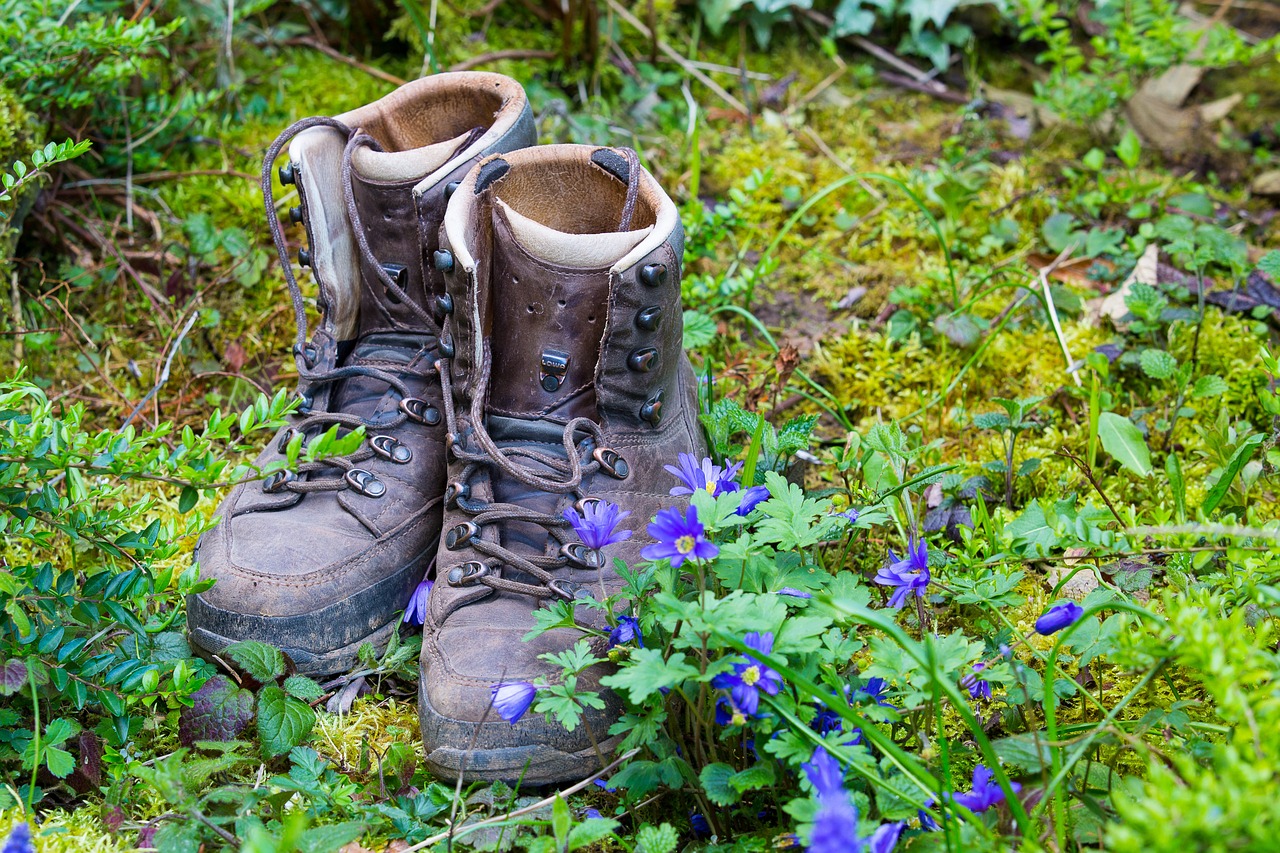Pick the Right Hiking Boots – Because It Hurts When You Get It Wrong

Have you ever bought some shoes that you love the look of and then when you wear them they’re horrible, give you blisters, don’t fit right or they don’t grip the rocks when you’re walking, or they’re not waterproof like you thought they were…
I have, and so have some of the other in the Outdoor Revival office, So we know how frustrating it can be, so we’ve created this little article to help you pick the right boots for you, to help you ask the right questions.
There are many different kinds of hiking boots available, and which one to buy depends on what you intend to do and where you intend to go with them.
Before you go shopping, think about what exactly you need. Do you require something for light hikes? Or maybe something really robust for hiking up slopes and over rugged land, you might need something more solid you can put crampons on in the winter?

It’s important to have the right shoes, so you will get to where you are going in comfort. Just as important is making sure you have the right fit to avoid blisters and other issues.
There are four general types of hiking boots available. Light hiking shoes look like running shoes and are low-cut, perfect for a single day’s hike or someone that wants to be more mobile.

Hiking boots are mid or high-cut boots for day hikes or hikes with light loads. They have a little extra support around the ankle and are almost as flexible as the light hiking shoes.
Backpacking boots are harder-wearing boots: they are made to withstand more vigorous hikes, when you are carrying more weight and planning to be out and about for days. They are durable and supportive, and the midsoles are stiffer than the previous two.

Finally, mountaineering boots are the heaviest and toughest of these boots. These boots are made to withstand anything you can throw at them; with these, you can carry heavy loads, and you can fit crampons onto them for traveling across glaciers and ice in the mountains.

Boot cut is also very important. Low-cut shoes are good for walking on maintained trails. However, they don’t protect the ankles from roll injuries. The mid-cut boots wrap around your ankles, giving them support and affording you some protection from dirt and sand.
High-cut boots are the best for ankle and balance support, especially on uneven terrain. If you carry heavy loads and like to hike off the beaten trail, these are for you. For all shoes, make sure you break them in thoroughly before you go anywhere.
Boots are made from various materials, all of which have an impact on the weight and durability of your footwear. Full-grain leather has good durability; boots made out of this are water resistant and don’t abrade. You use a wax to maintain full-grain leather, it’s most often used in making boots for rugged terrain.
Spilt-grain leather is sometimes paired with nylon to make a lighter and more breathable boot. Nubuck Leather looks like suede: a durable material that resists water and abrasions. Synthetics are used in most shoes and make them easier to break in.
Some boots have waterproof or breathable linings using moisture-wicking properties to keep your feet dry.

Getting the correct fit is the most important thing. You need to consider the length of your foot, your toes need to be able to wiggle inside the boot and the width needs to be correct. Nothing is more painful than boots that squeeze your feet. But your feet shouldn’t slide around either. Lastly, your foot should fit in the boot comfortably if the depth of the boot is correct.
Shopping for hiking boots is something you need to do in person. Put both shoes on in the store and stroll around. If you are getting them from an outdoor or hiking store, see if they have a hiking corner so you can learn how they feel when climbing up or across rocks. Wear the trail socks that you normally wear so you can be sure of the fit when you try on boots. Make sure you concentrate on how the boots feel on your feet. Do your feet slide or move in any way? Does tightening or loosening the shoe laces make a difference? This is one purchase you need to be sure you make correctly. If you’re unsure, ask the store professional for advice, as that is why he is there.
If you have any comments then please drop us a message on our Outdoor Revival facebook page
If you have a good article or blog to share let us know about it on our FB page, we’re also happy for article or review submissions, we’d love to hear from you.
We live in a beautiful world, get out there and enjoy it.
Outdoor Revival – Reconnecting us all with the Outdoor
